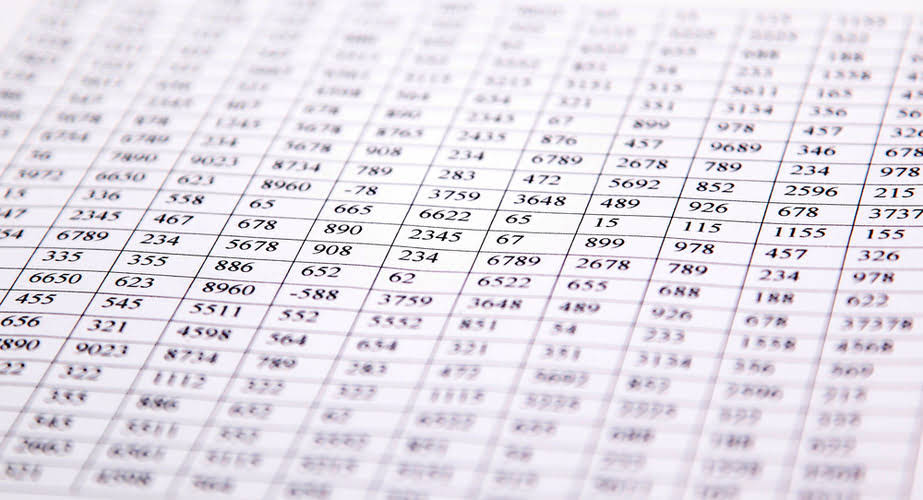
The concept is much easier to understand with an example of predetermined overhead rate. For instance, imagine that your company has a new job coming up, and you need to calculate predetermined overhead rate for an estimate of manufacturing costs. It also aids in setting accurate prices that account for the cost of production while predetermined overhead rate formula maintaining profitability. That amount is added to the cost of the job, and the amount in the manufacturing overhead account is reduced by the same amount. At the end of the year, the amount of overhead estimated and applied should be close, although it is rare for the applied amount to exactly equal the actual overhead.
- If not, you’ll have to manually add your indirect expenses to calculate your overhead rate.
- So, if you wanted to determine the indirect costs for a week, you would total up your weekly indirect or overhead costs.
- Hence, you can apply this predetermined overhead rate of 66.47 to the pricing of the new product X.
- The concept is much easier to understand with an example of predetermined overhead rate.
- The predetermined overhead rate helps prepare budgeted costs for each department.
Now management can estimate how much overhead will be required for upcoming work or even competitive bids. For instance, assume the company is bidding on a job that will most likely take $5,000 of labor costs. The management can estimate its overhead costs to be $7,500 and include them in the total bid price. The predetermined rate is also used for preparing budgets and estimating jobs costs for future projects. The overhead rate has limitations when applying it to companies that have few overhead costs or when their costs are mostly tied to production.
Example 2: Cost per Hour
In other words, using the POHR formula gives a clearer picture of the profitability of a business and allows businesses to make more informed decisions when pricing their products or services. In this article, we will discuss the formula for predetermined overhead rate and how to calculate it. Let’s assume a company has overhead expenses that total $20 million for the period. The company has direct labor expenses totaling $5 million for the same period. The overhead rate is a cost added on to the direct costs of production in order to more accurately assess the profitability of each product.
- In the coming year, the company expects the total overheads to be $150,000 and expects that there will be 3,000 direct labor hours worked.
- Since technology is not going anywhere and does more good than harm, adapting is the best course of action.
- As explained previously, the overhead is allocated to the individual jobs at the predetermined overhead rate of $2.50 per direct labor dollar when the jobs are complete.
- Taking a few minutes to calculate the overhead rate will help your business identify strengths and weaknesses and provide you with the information you need to remain profitable.
- The best CD rates may outpace any of the other accounts we’ve described above.
- In more complicated cases, a combination of several cost drivers may be used to approximate overhead costs.
That’s why it’s important to get to know all of the different terminology relating to accounting, and how these financial metrics can be used to assess the financial health of your business. As a result, there is a high probability that the actual overheads incurred could turn out to be way different than the estimate. Based on the above information, we must calculate the predetermined overhead rate for both companies to determine which company has more chance of winning the auction. If you’re using accounting software for your business, you can obtain this information directly from your financial statements or other system reports. If not, you’ll have to manually add your indirect expenses to calculate your overhead rate. During that same month, the company logs 30,000 machine hours to produce their goods.
Is there any other context you can provide?
We’re firm believers in the Golden Rule, which is why editorial opinions are ours alone and have not been previously reviewed, approved, or endorsed by included advertisers. Editorial content from https://www.bookstime.com/ The Ascent is separate from The Motley Fool editorial content and is created by a different analyst team. Mary Girsch-Bock is the expert on accounting software and payroll software for The Ascent.

The best 2-year CD rates will be slightly lower than 1-year and no-penalty CD rates. In exchange for a longer lock-in period, investors receive a long-term commitment for a specific rate. These are best used as part of a CD ladder strategy, or for those worried about a declining rate market in the foreseeable future. Six-month CDs are best for those who are looking for elevated rates on their savings for short-term gains, but are uncomfortable having limited access to their cash in the long term. These can be a good option for those who may just be getting started with saving, or who don’t have a large emergency fund for unexpected expenses. The best CD rates may outpace any of the other accounts we’ve described above.
Example of Predetermined Overhead Rate
For example, assume a company expects its total manufacturing costs to amount to $400,000 in the coming period and the company expects the staff to work a total of 20,000 direct labor hours. In order to calculate the predetermined overhead rate for the coming period, the total manufacturing costs of $400,000 is divided by the estimated 20,000 direct labor hours. Assume that management estimates that the labor costs for the next accounting period will be $100,000 and the total overhead costs will be $150,000.
- This is why a predetermined overhead rate is computed to allocate the overhead costs to the production output in order to determine a cost for a product.
- A 1-year term can be an attractive option for someone building a CD ladder, or for someone who has a reasonable cash safety net but is still concerned about long-term expenses.
- Obotu has 2+years of professional experience in the business and finance sector.
- To conclude, the predetermined rate is helpful for making decisions, but other factors should be taken into consideration, too.
- This means that once a business understands the overhead costs per labor hour or product, it can then set accurate pricing that allows it to make a profit.
Costs must thus be estimated based on an overhead rate for each cost driver or activity. It is important to include indirect costs that are based on this overhead rate in order to price a product or service appropriately. If a company prices its products so low that revenues do not cover its overhead costs, the business will be unprofitable. Management analyzes the costs and selects the activity as the estimated activity base because it drives the overhead costs of the unit. You can calculate this rate by dividing the estimated manufacturing overhead costs for the period by the estimated number of units within the allocation base.
Machine hours
This means that for every dollar of direct labor cost a production process uses, it will use $1.50 of overhead costs. This usually involves dividing the estimated manufacturing overhead cost by the estimated units of the allocation base for the particular period. The price a business charges its customers is usually negotiated or decided based on the cost of manufacturing.
- The overhead rate is calculated by adding your indirect costs and then dividing them by a specific measurement such as machine hours, sales totals, or labor costs.
- During that same month, the company logs 30,000 machine hours to produce their goods.
- A number of possible allocation bases are available for the denominator, such as direct labor hours, direct labor dollars, and machine hours.
- Departmental overhead rates are needed because different processes are involved in production that take place in different departments.


Leave a Reply